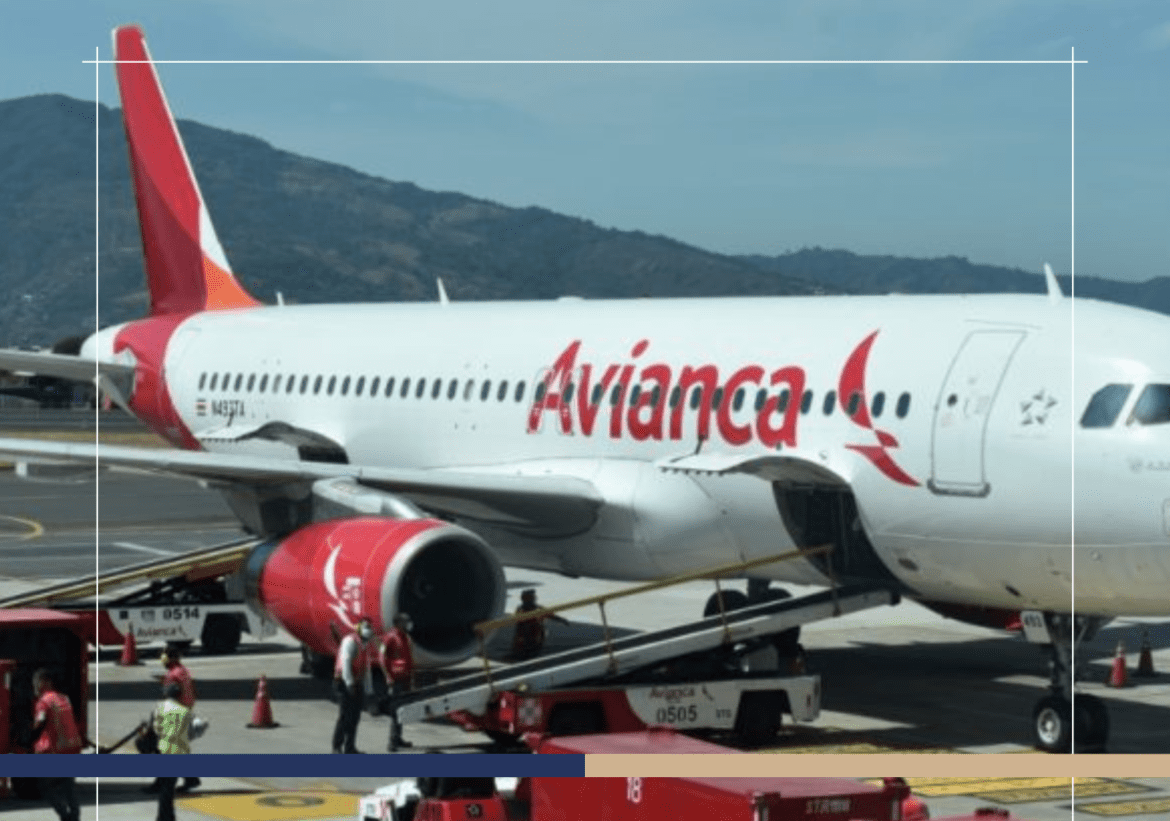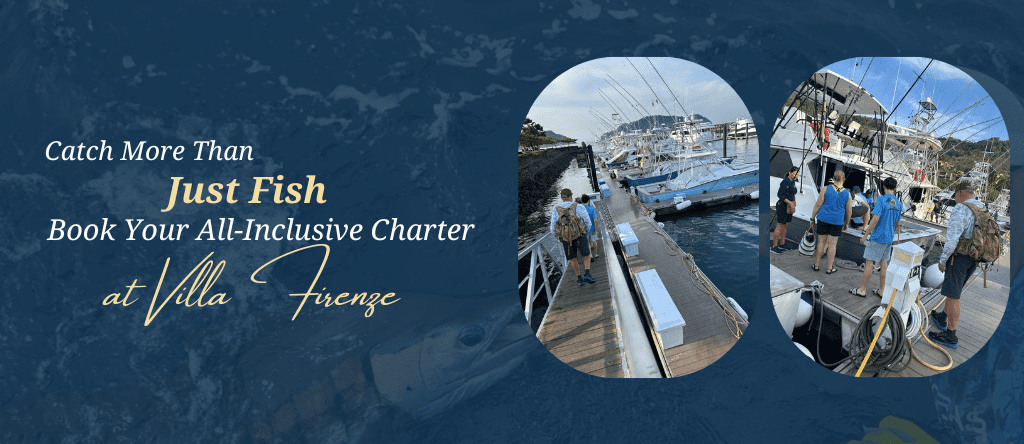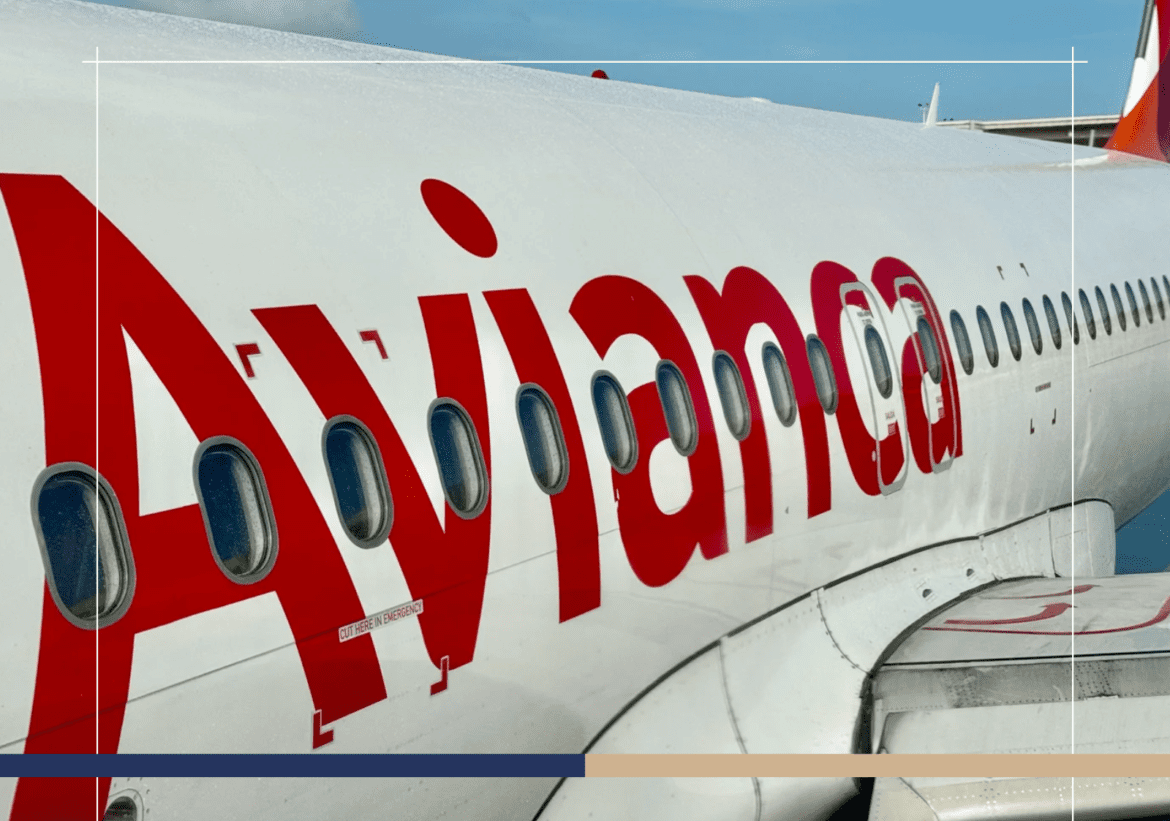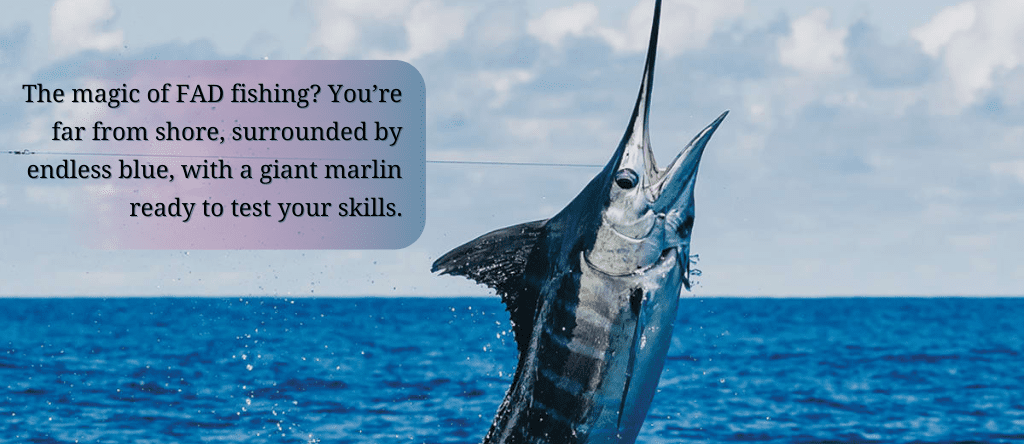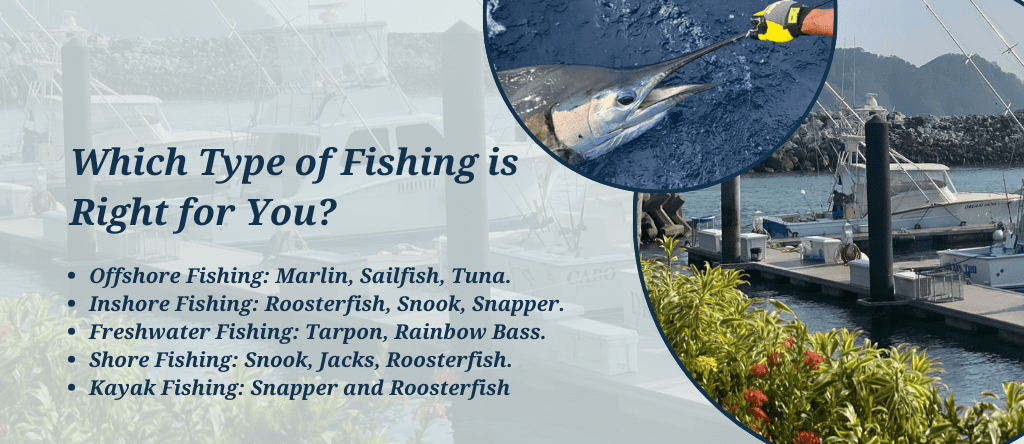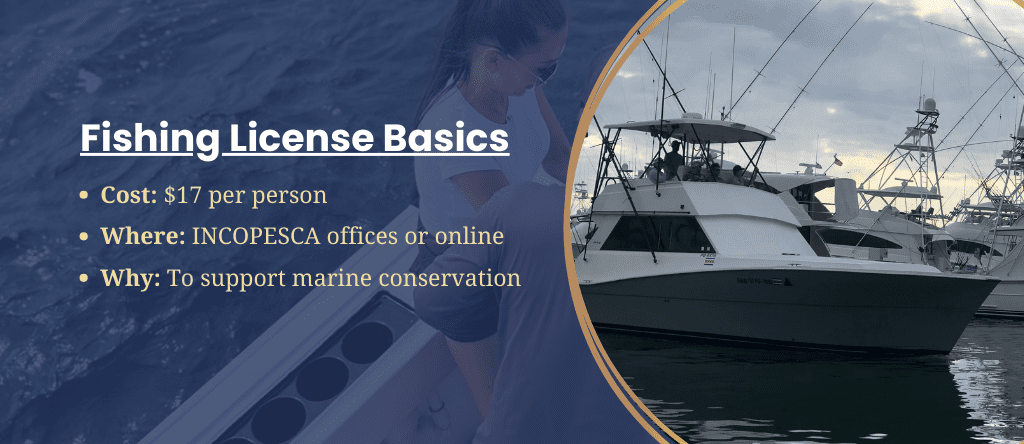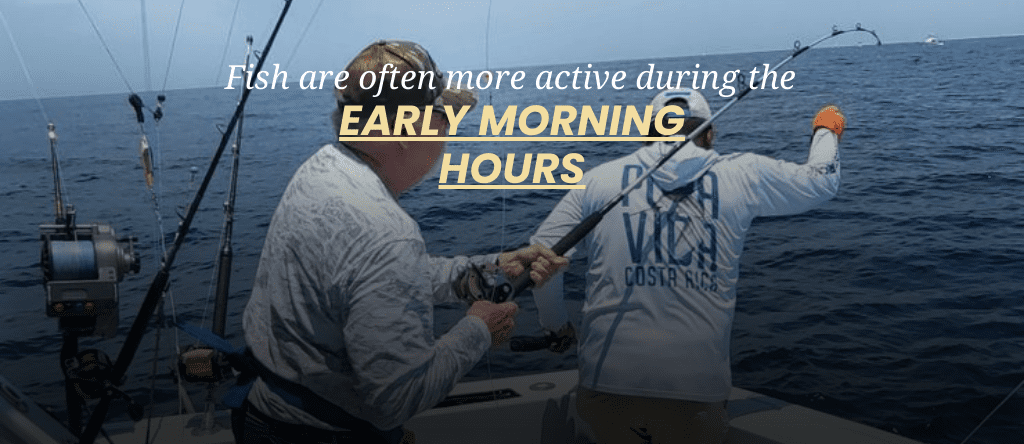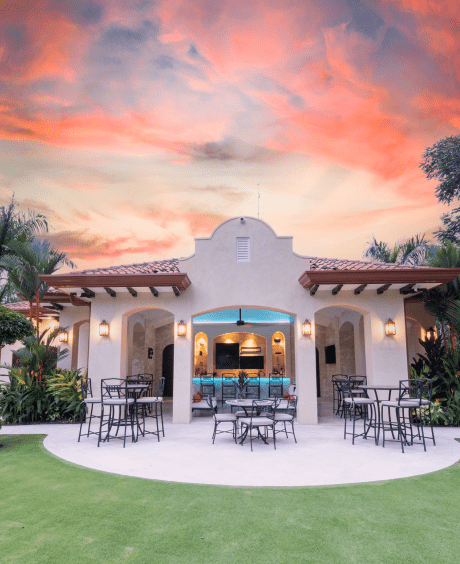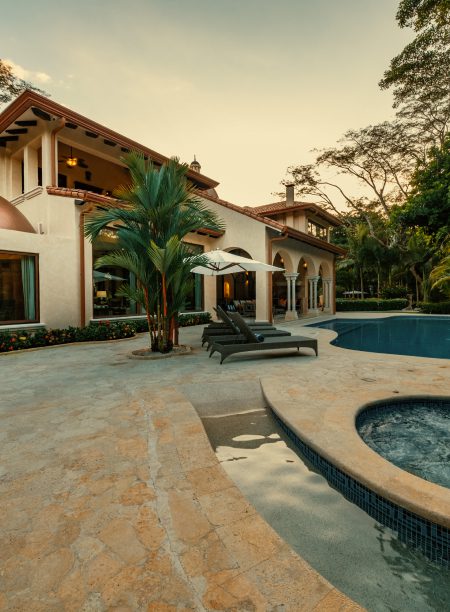Costa Rica is renowned for its stunning marine biodiversity and beautiful coastlines, making it one of the top sportfishing destinations in the world. Sportfishing in Costa Rica is more than just a pastime; it offers an exciting adventure filled with challenges that create unforgettable memories. To succeed in this thrilling activity, anglers must develop and refine their sportfishing skills to master the waters in Costa Rica.
This article will help you improve your fishing skills to get the most from your trip. So, here are some steps to master sportfishing in this tropical haven.
Nature of Costa Rica as a Sportfishing Destination
Costa Rica offers unique and rich opportunities for sport fishing. The vibrant waters in different regions will cater to the specific goals you want to achieve. You only want to understand the tropical waters.
Species and Fisheries
In Costa Rica, there exist numerous game fish species with an allure in itself:
- Marlin: Great action and excessive power from November to February and June to August.
- Sailfish: Dry season, December to April, is when they are caught best.
- Dorado (Mahi-Mahi): May to August, full of color and speed.
- Roosterfish: Year-round but most active from December to April.
- Yellowfin Tuna: Present all year long, but the rainy season, May to November, brings the peaks.
Knowing the best times to target a particular species can maximize the successful catch ratio while enhancing the overall fishing experience. Targeting these peaks ensures better catches and more excitement.
Regions to Target
Costa Rica has two main coasts that anglers can fish on:
- Pacific Coast: Those who want to fish in Quepos, Los Sueños, or Tamarindo should go deep-sea fishing on the Pacific Coast of Costa Rica, where they can catch marlin, sailfish, or tuna.
- Caribbean Coast: Famous for tarpon and snook fishing, the Caribbean waters offer a unique and challenging fishing experience.
Utilize Local Knowledge
Local knowledge can transform a mediocre fishing trip into a memorable one. Costa Rican guides and professional anglers can help you navigate the changes in the waters.
Hire Experienced Local Guides
Local fishing guides bring invaluable knowledge of the waters, weather patterns, and fish species’ behaviors. They know the best fishing spots and techniques to make your trip successful.
Learn the Nature of Costa Rican Waters
Spend time understanding the tides, currents, and weather patterns of Costa Rican waters. These factors greatly influence fish behavior and can improve your chances of a successful catch.
Importance of Understanding Fish Behavior
Knowing the nature and preferences of local fish is essential. Learn their diet, concentration points, and activity patterns, especially during peak fishing season, to know what you will face when on the waters.
Networking with Locals
Take time to connect with the community of anglers by visiting places where people congregate to go fishing or attending fishing clubs. Networking with an experienced angler can give tips and insights about improving your craft.
Participation in Local Fish Tournaments
Fishing tournaments are excellent events for learning more advanced techniques, meeting experienced anglers, and challenging oneself in a competitive environment. Numerous tournaments are held in Costa Rica throughout the year.
Be Aware of Local Regulations
Learn Costa Rica’s fishing regulations, including catch-and-release policies, species restrictions, and fishing licensing requirements. Adhering to such rules helps you understand sustainable fishing practices while preserving the marine ecosystem.
Get Familiar with Essential Sportfishing Techniques
Improving your fishing techniques is key to becoming a successful angler. Whether fishing inshore or offshore, honing your sportfishing skills will enhance your overall experience.
Bait and Lure Selection
Selecting the right bait or lure is crucial. For the best results, use options that mimic the natural prey of your target species. Experimenting can also reveal what works best in specific conditions.
Deep-Sea vs. Inshore Fishing Skills
- Deep-Sea Fishing: Anglers should specialize in trolling techniques and larger gear for catching big game species, like marlin and tuna.
- Inshore Fishing: Get a feel for casting to structure and shallow water ecosystems for species such as roosterfish and snook.
Master Local Casting Techniques
Various regions within Costa Rica may have specific techniques to apply. For the best results, fly fishing can be effective in some inshore areas—practice, practice, and perfect accuracy and presentation.
Use Natural Indicators
To determine active fishing zones, observe natural indicators like bird activity, water movement, and baitfish behavior. These cues are invaluable in locating fish.
Hooking Techniques
Master the art of hooking fish properly to avoid missed opportunities. Pay attention to strike timing and pressure to secure your catch.
Knot Tying
Proficiency in tying strong, reliable knots is essential for securing hooks and lures, especially when battling large, powerful fish.
Adapting to Depth and Water Conditions
Adjust your techniques according to the depth of water, clarity, and changes in weather. Observe natural indicators such as bird activity or patterns on the water surface to lead you to active fish.
Preparation for Specific Conditions
Make sure that your gear and strategy are appropriate for the conditions. For example, heavier lines should be used for deep-sea fishing and lighter for inshore targets.
Target-Specific Tactics
Different species call for a different strategy. Study and apply specific strategies on marlin, sailfish, or roosterfish to increase your success.
Improving Your Strike and Fight Skills
Master the skill of striking at the right time and how to control the fight when reeling in large fish. This is where your sportfishing skills become essential when dealing with big-game species like marlin and tuna.
Choose Appropriate Fishing Equipment and Gear
The right equipment makes a difference in sportfishing. Every professional angler prepares reliable, well-maintained fishing gear for every challenge.
Fishing Gear
Choose the rod, reel, and line according to the size or strength of a Costa Rican fish. Large tackle is generally used for fishing marlin but light gear with inshore applications.
Keep and Maintain Your Equipment
For optimal performance on the waters, anglers should conduct regular maintenance—cleaning equipment, checking for wear and tear, and replacing parts regularly.
Advanced Equipment
Fish finders, which may help detect underwater structures and locate fish, will significantly improve fishing efficiency.
Practice Patience and Adaptability
Fishing is a sport that tests your patience and your ability to adapt to nature’s unpredictability. The waters of Costa Rica can shift rapidly, and success often hinges on how observant and flexible you are during these changes.
Observe water conditions
Pay attention to the temperature, currents, and weather. These minute changes may reveal how fish will act and where they might be found. Some species might prefer warmer waters or a merge of currents. Recognizing and acting upon these patterns may enhance your chances for a good outing.
Be Persistent and Keep Your Game Up
Equally important, persistence is crucial. Fishing is a fickle play; sometimes, conditions will not play to your advantage. When such conditions become uncooperative, and the toughest fish or hostile weather is there to challenge you, you need to be persistent in your play. Adjust the bait, change the nature of casting, or alter the time of fishing to increase the opportunities that come your way. Each failure presents an opportunity to adapt and improve your approach and advance as an angler.
Improve Teamwork and Communication
Sportfishing in Costa Rica may often require collaboration, especially when ventures into the deep seas are involved. Successful ventures often depend on communication and good coordination among the team. Working as a team will make the experience worthwhile, enjoyable, and rewarding.
The definition of roles begins with effective teamwork. Each member of the team working on the boat should be assigned responsibilities. For example, one person might manage the reel while another prepares the gaff, which helps to bring the catch onboard the charter as soon as possible and with minimal safety issues. Communication in such situations should be clear to avoid confusion and maximize efficiency.
Experiences shared before, during, and after the fishing trips help bond the team members. Members share tips on what to do next, share interesting moments, and learn from their fellow members’ strengths. This spirit creates a support system that fosters growth among members as anglers.
Learn from Professionals
One of the best ways to improve your sportfishing skills is by observing and learning from seasoned professionals. These experts have years of experience navigating Costa Rica’s waters, and their insights can help you significantly enhance your techniques.
It will give you hands-on experience and be the only opportunity for a charter fishing adventure with the captains. These very skilled anglers know the best fishing spots and how to adjust when situations get bad. You learn priceless baiting and casting techniques that you can put into practice during your next outing. You know this scenario much better in real-time than you understand it through some instruction or classroom-based sessions.
In addition, one should pay much attention to the methods and techniques experienced anglers use in fishing. From their skill in tying knots to the precision of casting and striking, much can be learned from observing their action. These techniques will help to polish your sportfishing skills and prepare you for all types of fishing.
Learning from professionals ensures you benefit from their expertise while developing your unique style.
Endorse Sustainable Fishing Habits
Costa Rica’s marine ecosystem must be preserved to ensure that future generations will also benefit from the quintessential sportfishing experience. The health and longevity of the marine environment result from sustainable fishing practices by anglers.
Start with the local regulations, which are in place to protect the fish populations and ensure sustainability. Respect catch-and-release policies, which help maintain healthy numbers of prized species like marlin and sailfish. Size and species limits are also critical because they prevent overfishing and ensure that the balance of the ecosystem remains intact.
Also, practice measures that promote conservation beyond compliance. Eco-friendly gear should be used to help fish find their way without harming them, and waste should be disposed of properly so as not to pollute the waters. Support local conservation efforts or contribute to marine preservation programs. Taking such steps ensures that the waters in Costa Rica stay as world-class fishing spots for generations.
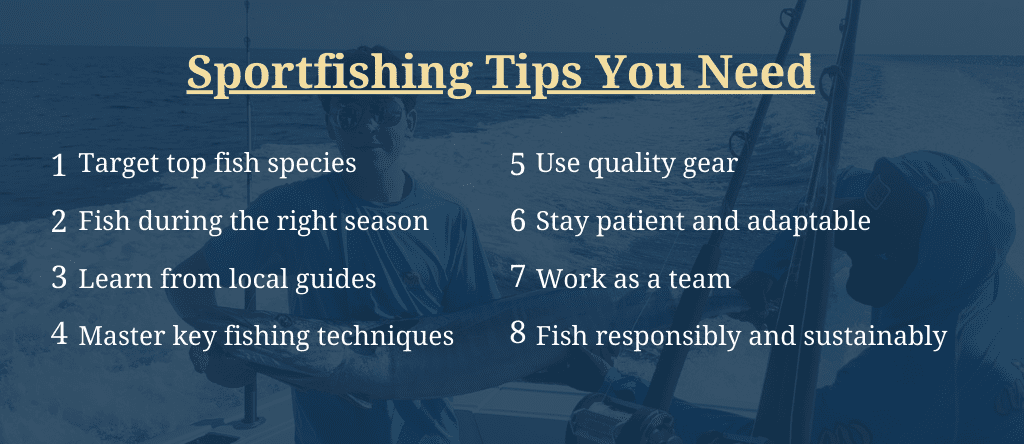
Ready to Master the Art of Sportfishing in Costa Rica?
Improving your skills in sport fishing in Costa Rica is about experiencing more than a catch. Instead, it relates to the beauty of the ocean that you get immersed in or learn from your local experts who will master ways to make memories unforgettable.
Ready to take your sportfishing skills to the next level? Plan your fishing vacation in Costa Rica, join a fishing charter, or stay at Villa Firenze to enjoy a day full of fishing fun—whatever the way is, you will have fun and adventure in Costa Rica, and that’s for sure.



